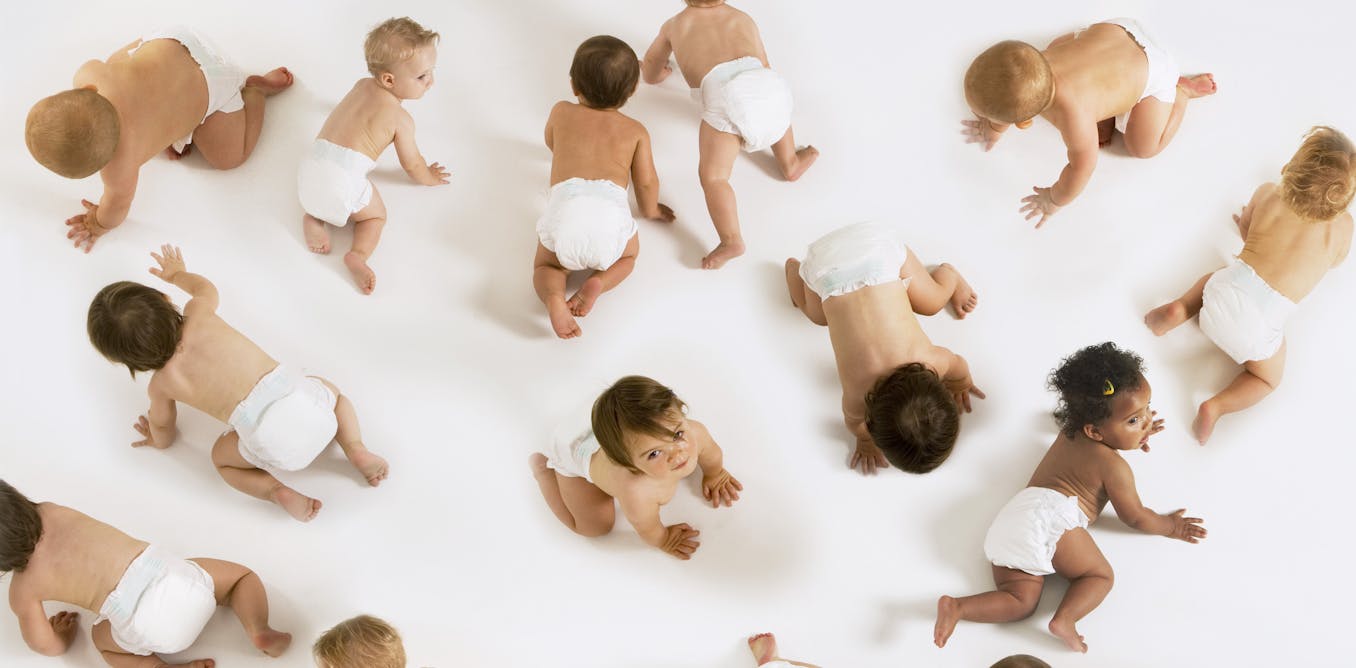
Fertility treatment use is on the rise – new legislation could increase protections for donors and families in an industry shrouded in secrecy
A pending bill in Colorado would disclose donor information to children and their parents and set limits on how many families can use a single individual’s egg or sperm.
May 3, 2022 • 12 min • Source
The fertility industry generates approximately US$8 billion in revenue annually and plays a role in the birth of tens of thousands of children each year. Regulations are currently limited even as technology evolves and demand increases. But a new Colorado bill introduced in late April 2022 could help the industry better meet the needs of those who use it.
Fertility treatments take a number of forms . They may include fertility medication, intrauterine insemination, in vitro fertilization, or the use of donor sperm, eggs or embryos. Expenses for each treatment type vary widely, ranging from roughly $15,000 to $30,000 for a single IVF cycle to about $1,000 for a vial of sperm. Often, multiple tries are needed to achieve a pregnancy, and the costs can add up.
Despite these costs, the number of people who use reproductive technology is consistently rising. U.S. births assisted by fertility treatments increased more than threefold from 1996 to 2015.
We are law professors who study reproductive technology . One of us has used these treatments ourselves. The new Colorado bill we testified in support of would be the first in the U.S. to require the identity of egg and sperm donors to be released upon request of their donor-conceived offspring when they turn 18. In the bill’s current version, it would also set a limit on the number of families per individual donor.
To understand the significance of Colorado’s proposed legislation, it’s worth examining the scope of issues surrounding fertility treatment in the U.S., and how the industry works.
Access to fertility services
Twelve percent of women in the U.S. have received some form of medical care for infertility, a condition that affects roughly 10% to 20% of heterosexual people. Same-sex couples and single individuals who want to reproduce face social infertility , where their relationships and social circumstances preclude the ability to conceive a child.
A small but increasing number of states require insurance companies to offer fertility coverage, although the scope and nature of coverage varies by policy and by state .
More employers are also offering fertility benefits. However, which services they cover vary, the most common being evaluation by an infertility specialist. An increasing percentage of companies are covering egg freezing and in vitro fertilization.
While some Medicaid programs cover fertility testing, only one state covers a few types of treatment. Most states still do not require health insurance policies to cover fertility benefits, and some of those states that do limit benefits to heterosexual married people .
A lack of fertility specialists in some areas of the U.S. also restricts access to fertility care. For example, as of 2019, Alaska and Wyoming have no fertility clinics offering assisted reproductive technology such as IVF. Similarly, Black and Hispanic women are less likely than white women to have access to fertility care and to have successful IVF cycles, due in part to socioeconomic barriers.
Tracking fertility treatment and privacy
The federal government collects information about the success rates of fertility clinics. But little is known about one growing segment of that market: egg, sperm and embryo donation.
A 2019 report from the Centers for Disease Control and Prevention states that there were almost 78,000 live births stemming from fertility treatments. These births resulted from a total of 330,773 assisted reproductive technology cycles, 27,131 of which were from eggs and embryos. Because the federal government does not keep track of the number of children born through sperm donation , it is unclear exactly how many births were a result of egg, embryo or sperm donation.
Secrecy surrounding reproductive cell donation has long been embedded in the culture of the fertility industry, often leading doctors to urge parents not to tell their children that they were donor-conceived. Such secrecy was believed to be best for everyone by creating the illusion of biological connection. It was also influenced by shame concerning infertility and a desire to prevent interference with the parent-child relationship.
While genetic testing , personal information on the internet and changing family structures are challenging this culture of secrecy, donor anonymity is still common practice. A 2022 study from the U.S. Donor Conceived Council , a nonprofit advocating for the interests of donor-conceived people, found that despite an increasing number of sperm banks allowing donor-conceived people to access information about their donor, 70% still permit anonymous donation .
Protecting donors, parents and their children
States are beginning to introduce ways to protect the interests of the parties affected by the fertility industry. Many states already have laws in place that follow some version of the Uniform Parentage Act , which provides special rules for parentage when a child is donor conceived. An increasing number of states have enacted fertility fraud legislation that criminalizes or provides civil remedies for donor misrepresentation, such as when a fertility doctor uses his own sperm without telling the parents.
Another area of growing interest is providing donor-conceived people and recipient parents important medical or personally identifying information about their donor.
In 2011, Washington became the first state to allow disclosure of donor-identifying information and medical history to children when they turn 18. Since then, a few other states have adopted the Uniform Parentage Act , which requires banks and fertility clinics to collect and release identifying donor information to donor-conceived individuals if the donors had agreed to disclosure.
Proposed legislation in New York would require sperm and egg banks to gather, verify and share important information about a donor’s health, education and criminal history with prospective parents and donor-conceived people. Some countries have gone further with bans on donor anonymity, including Sweden in 1985 , the U.K. in 2004 and the state of Victoria in Australia in 2016 .
More protections
Other protections may be coming down the line.
One measure is to limit the number of families using the same donor. This can protect donor-conceived people from feeling commodified and dehumanized if they find that they were conceived in a large group as part of a moneymaking industry.
In the U.K., no more than 10 families can use the same donor (excluding the donor’s own family), though there is no limit on the number of children conceived per family. And in Denmark, donor sperm may only be used for 12 inseminations .
[ Understand new developments in science, health and technology, each week. Subscribe to The Conversation’s science newsletter .]
No U.S. state currently sets such limits. While some sperm banks have tried to impose limits, they are not required to keep track of how many children are born from an individual donor. Moreover, donors can give their sperm to another bank. Any limit would be difficult to monitor, much less enforce.
Lastly, regulations could ensure that donors and parents are fully informed about the social and legal implications of donor conception , including that other people may be conceived with the same donor’s gametes. Some states may also address the risk of harmful health effects of repeat egg donation by limiting the number of times a person can donate.

Colorado’s bill
Colorado took a groundbreaking step by considering a bill that introduces broad regulations that tie together trends across the industry. The law would ensure that donor-conceived people can learn the identity of the donor upon reaching adulthood and sets limits on the number of families to whom any one particular donor can provide their gametes. It would also ensure access to educational materials that guide families and donors through the process, including resources on how to discuss donor conception with children.
While there may be concerns that eliminating donor anonymity would compromise donor privacy and affect donor availability , we believe there is substantial evidence to the contrary.
A 2016 study of 161 sperm donors found that while some might be dissuaded by such laws, more than two-thirds would be willing to donate at an additional price of $60 per donation. In Australia , where payment for sperm donation is prohibited beyond expense reimbursement , the number of sperm donors actually increased after anonymity was removed . Similarly, a 2020 survey of 148 egg donors in South Africa, where donor anonymity is allowed, found that 79% would have still donated their eggs even if their identity were released.
We believe that the Colorado bill could set a precedent for how other states regulate fertility treatment and protect the interests of all those involved.
Naomi Cahn co-wrote testimony in support of CO SB22-224 for the Colorado State Senate hearings.
Sonia Suter co-wrote testimony in support of CO SB22-224 for the Colorado State Senate hearings.

